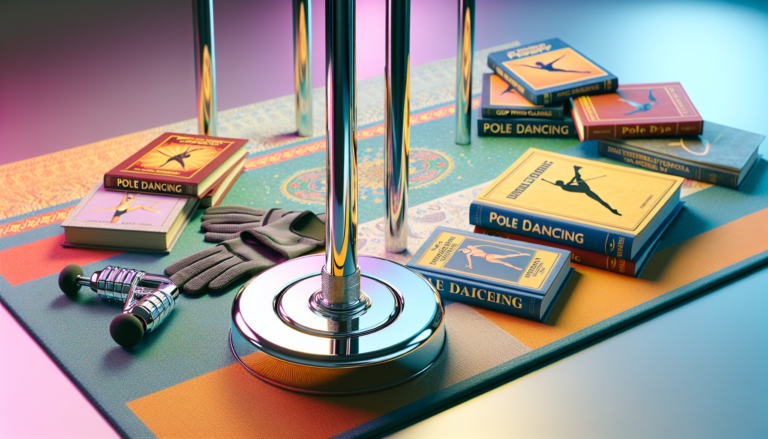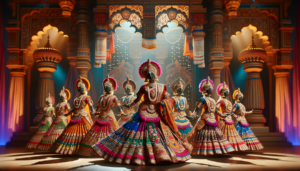Introduction to Pole Dance
Pole dance has emerged as a captivating and empowering form of fitness that combines dance, acrobatics, and strength training. It offers a unique way to express yourself, build confidence, and get in shape. Whether you’re a complete beginner or have some experience, pole dance is an inclusive activity that welcomes people of all ages, shapes, and sizes.
What is Pole Dance?
Pole dance is a performance art that involves dancing and performing acrobatic tricks on a vertical pole. It requires a combination of strength, flexibility, and grace. Pole dance routines often incorporate spins, climbs, inversions, and other impressive moves. While it originated in strip clubs, pole dance has evolved into a mainstream fitness activity and competitive sport.
Benefits of Pole Dancing
Engaging in pole dance offers numerous physical and mental benefits:
- Full-body workout: Pole dancing engages nearly every muscle group, providing a comprehensive workout that builds strength, endurance, and flexibility.
- Improved coordination and balance: Mastering pole dance moves requires precise body control, enhancing your overall coordination and balance.
- Increased confidence and self-esteem: Accomplishing challenging moves and expressing yourself through dance can significantly boost your confidence and self-image.
- Stress relief and mental well-being: The combination of physical exertion and artistic expression makes pole dance a great way to relieve stress and improve mental well-being.
Getting Started with Pole Dance
Starting your pole dance journey may seem daunting, but with the right equipment, setup, and safety precautions, you’ll be well on your way to mastering the art of pole dancing.
Essential Equipment for Beginners
To get started with pole dance, you’ll need the following essential equipment:
- Dance pole: Choose a sturdy, high-quality dance pole that suits your height and skill level. Options include static, spinning, and portable poles.
- Crash mat: A crash mat provides a soft landing surface, reducing the risk of injury during practice.
- Grip aids: Grip aids, such as chalk, liquid chalk, or rosin, help improve your grip on the pole, especially when your hands become sweaty.
- Comfortable clothing: Wear form-fitting, stretchy clothing that allows for easy movement and skin contact with the pole.
Setting Up Your Pole at Home
If you plan to practice pole dance at home, it’s crucial to set up your pole correctly and safely:
- Choose a room with high ceilings and ample space for spinning and extending your legs.
- Ensure the pole is securely installed according to the manufacturer’s instructions.
- Use a crash mat underneath the pole to cushion any falls.
- Regularly check the pole’s stability and tighten any loose screws or fittings.
Safety Tips for Beginners
As with any physical activity, prioritizing safety is essential when practicing pole dance:
- Warm up and stretch: Always begin with a proper warm-up and stretching routine to prevent injuries and prepare your body for the demands of pole dance.
- Listen to your body: Don’t push yourself too hard or attempt moves beyond your current skill level. Progress gradually and listen to your body’s signals.
- Use a spotter: When attempting new or challenging moves, have a trained spotter nearby to assist you and ensure your safety.
- Stay hydrated: Drink plenty of water before, during, and after your pole dance sessions to maintain hydration and support your body’s recovery.
Basic Pole Dance Moves
As a beginner, it’s essential to master the foundational pole dance moves before progressing to more advanced techniques. Here are some basic moves to get you started:
Top 10 Beginner Pole Moves
1. Pole Walk
2. Fireman Spin
3. Front Hook Spin
4. Back Hook Spin
5. Chair Spin
6. Pole Sit
7. Cradle Spin
8. Backwards Showgirl
9. Carousel Spin
10. Fan Kick
To master these moves, start with slow, controlled movements and focus on proper form. As you gain confidence and strength, gradually increase your speed and fluidity.
Step-by-Step Guide to Basic Spins
Spins are a fundamental component of pole dance routines. Follow this step-by-step guide to execute basic spins:
- Grip the pole with both hands at shoulder height, keeping your arms straight.
- Take a step forward with your outside leg, crossing it in front of your inside leg.
- Push off the ground with your inside foot, initiating the spin.
- Keep your body close to the pole and your legs together as you spin.
- Control your speed by adjusting your grip and the pressure of your legs against the pole.
- To stop the spin, gently lower your inside foot to the ground and release your grip on the pole.
Practice these steps slowly at first, focusing on maintaining proper form and control. As you become more comfortable, experiment with different arm and leg positions to create variations on basic spins.
How to Master Pole Inverts
Pole inverts are iconic moves that involve hanging upside down on the pole. While they may appear intimidating, mastering inverts is achievable with proper technique and practice:
- Begin with a strong grip on the pole, hands slightly wider than shoulder-width apart.
- Engage your core and lift your legs off the ground, bringing your knees towards your chest.
- As you lift your hips, hook your outside leg around the pole, placing the pole in the crease of your knee.
- Continue lifting your hips and extending your inside leg straight up towards the ceiling.
- Squeeze the pole between your thighs and engage your core to maintain your inverted position.
- To dismount, slowly lower your inside leg and unhook your outside leg, gently lowering yourself back to the ground.
Remember to practice inverts with a spotter until you feel confident in your ability to execute them safely on your own.
Advanced Pole Dance Techniques
As you progress in your pole dance journey, you’ll have the opportunity to explore more advanced techniques and develop your own unique style.
Intermediate Pole Dance Combos
Combining multiple pole dance moves into fluid sequences is an essential skill for creating captivating routines. Here are a few intermediate pole dance combos to try:
| Combo 1 | Combo 2 | Combo 3 |
|---|---|---|
| 1. Pole Walk 2. Fireman Spin 3. Pole Sit 4. Carousel Spin |
1. Back Hook Spin 2. Cradle Spin 3. Fan Kick 4. Front Hook Spin |
1. Invert 2. Butterfly 3. Gemini 4. Dismount |
Practice linking these moves together seamlessly, focusing on maintaining fluidity and musicality throughout the combo.
Challenging Pole Dance Tricks
Advanced pole dancers incorporate impressive tricks into their routines to showcase their strength, flexibility, and creativity. Some challenging pole dance tricks to aspire to include:
- Flag: A horizontal position on the pole, where you keep your arm and leg straight, hovering parallel to the ground.
- Ayesha: A one-handed invert in which you hold the pole with one hand and extend both legs directly outward.
- Shoulder Mount: An inverted position where you grip the pole between your shoulder and jawline, using your shoulder as a contact point while keeping your legs extended.
- Iron X: A gravity-defying move where you hold the pole with both hands, extending your legs out to form an “X” shape.
Remember, these advanced tricks require significant strength, flexibility, and proper technique. Always work with a qualified instructor and use safety precautions when attempting new moves.
Pole Dance Training and Resources
To support your pole dance journey, take advantage of the numerous training resources and learning opportunities available online and in-person.
Online Pole Dance Lessons
Online pole dance lessons offer a convenient and accessible way to learn and practice from the comfort of your own home. Some popular online platforms include:
- Studio Veena
- Open Dance Academy
- Cleo’s Rock ‘N Pole
- 123 Pole Fitness
These platforms provide instructional videos, tutorials, and courses suitable for various skill levels, allowing you to learn at your own pace and schedule.
Best YouTube Channels for Pole Dance
YouTube is an invaluable resource for pole dance inspiration, tutorials, and tips. Some of the best YouTube channels for pole dancers include:
- Cleo’s Rock ‘N Pole
- Pole Dance Academy
- PolePedia
- Vein Plastic
- Nadia Sharif Pole
Subscribe to these channels and explore their videos to expand your pole dance knowledge and stay inspired.
Pole Dance Apps and Tools
Take your pole dance training to the next level with these useful apps and tools:
| App/Tool | Description |
|---|---|
| Pole Dance Kink | An app featuring pole dance tutorials, combos, and a progress tracker. |
| Pole Buddy | A pole dance move and combination generator for creative inspiration. |
| Pole Dance Fitness | An app offering pole dance workouts, tutorials, and challenges. |
| Pole Dice | A set of dice with pole dance moves to create random combo challenges. |
Incorporate these tools into your pole dance practice to keep your training engaging, challenging, and fun.
Community and Support
Surrounding yourself with a supportive pole dance community can provide encouragement, inspiration, and opportunities for growth.
Joining Pole Dance Communities
Engage with the pole dance community both online and in-person to connect with like-minded individuals and expand your knowledge:
- Join pole dance Facebook groups and forums to ask questions, share experiences, and seek advice.
- Attend local pole dance workshops, events, and competitions to meet other pole dancers and learn from experienced instructors.
- Join a pole dance studio or class to train with others and benefit from in-person guidance and support.
Engaging with Other Pole Dancers
Building relationships within the pole dance community can lead to valuable friendships, collaborations, and growth opportunities:
- Share your progress: Post videos and photos of your pole dance journey on social media to celebrate your achievements and inspire others.
- Collaborate with other dancers: Connect with pole dancers in your area to practice together, share tips, and create collaborative routines.
- Attend pole dance events: Participate in pole dance workshops, showcases, and competitions to learn from others, showcase your skills, and celebrate the pole dance community.
Remember, the pole dance community is generally welcoming, supportive, and inclusive. Don’t hesitate to reach out, ask for help, and offer encouragement to others on their pole dance journeys.
Conclusion
Embarking on your pole dance journey is an exciting and rewarding experience that offers numerous physical, mental, and emotional benefits. By mastering the art of pole dancing, you’ll develop strength, flexibility, confidence, and self-expression.
Recap of Key Points
– Pole dance is a full-body workout that combines dance, acrobatics, and strength training.
– Essential equipment for beginners includes a dance pole, crash mat, grip aids, and comfortable clothing.
– Master basic pole dance moves before progressing to more advanced techniques and combos.
– Utilize online lessons, YouTube tutorials, and pole dance apps to support your training.
– Engage with the pole dance community for inspiration, support, and growth opportunities.
Encouragement to Start Your Pole Dance Journey
Remember, every pole dancer starts as a beginner. Embrace the learning process, celebrate your progress, and don’t compare yourself to others. With dedication, practice, and a positive attitude, you’ll develop the skills and confidence to master the art of pole dancing.
So, what are you waiting for? Get your pole dance equipment, find a supportive community, and start your pole dance journey today! Embrace the challenges, revel in the triumphs, and let pole dance become a source of joy, empowerment, and self-expression in your life.






